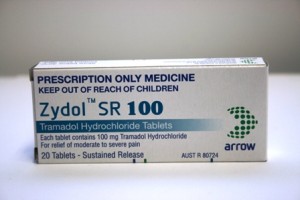Zydol Use
Zydol is the brand name of the drug Tramadol. Other brand names include Conzip, Ryzolt, Ultracet, and Ultram. It is an opiate painkiller, so it works by binding to opiate receptors in the brain. Compared to drugs like oxycodone, it has a relatively weak affinity for the receptors.
Zydol use was originally intended to be a non-narcotic painkiller. Manufacturers wanted to develop a pain medication that would treat pain, but not be addicting. To that end, they tried to manufacture an opiate that wouldn’t bind with the opiate receptor that causes euphoria (the main cause of addiction) and suppressed breathing (the main cause of opiate-related fatalities). Because it wasn’t meant to be addictive, Zydol use could be theoretically be prescribed to narcotic addicts, and many doctors mistakenly prescribed it to addicts and known abusers when it first came out. However, though the company that developed Zydol initially claimed that this substance produced only very weak narcotic effects, recent data demonstrate that opioid activity is the overriding contributor to the drug’s pharmacological activity. As a consequence, many reports of abuse and dependence have been received. The new Physician’s Desk Reference makes it clear that Zydol is not to be used as a substitute opioid for addicts, not to be used in efforts to wean addict patients from opiate drugs, nor to be used to manage long-term opiate addiction.
Since its release in 1995, Zydol use has been shown to have similar effects of other opiate receptor agonists, including a potential for abuse and dependence. Zydol use can cause a sense of euphoria, dry mouth, constipation, nausea, itching, drowsiness, and suppressed breathing. It is prescribed to treat moderate to severe pain in adults.
If a person becomes dependent on Zydol and then stops taking it suddenly, withdrawal symptoms are common. Often these include restless leg syndrome, muscle contraction, and uncontrollable nervous tremors. Zydol use has also been associated with anxiety and an increased likelihood of seizures. Zydol withdrawal lasts longer than that of other opioids, with 7 or more days of acute withdrawal symptoms as opposed to the typical four day withdrawal that is common with other opioid agonists.
Besides the opiate agonist activity, Zydol also has monoamine reuptake inhibition that contributes to its painkilling effect. Zydol use is currently being investigated in treating certain mental health conditions, but it has not been approved for this yet. This secondary effect is probably what causes withdrawal from Zydol use to last longer than other opioids. Zydol withdrawal includes symptoms of opioid withdrawal and also symptoms of anti-depressant withdrawal.
Zydol is most commonly abused by narcotic addicts, chronic pain patients, and health professionals. It is fairly easy to get because it is not yet a federally controlled substance. However, in response to the rising incidence of abuse and dependence with Zydol use, several states have chosen to make Zydol a controlled substance.
However, compared to other opioids, Zydol use has a low incidence of abuse and addiction. Side effects from abuse tend to be more common with Zydol use, and the “high” is not as intense.
